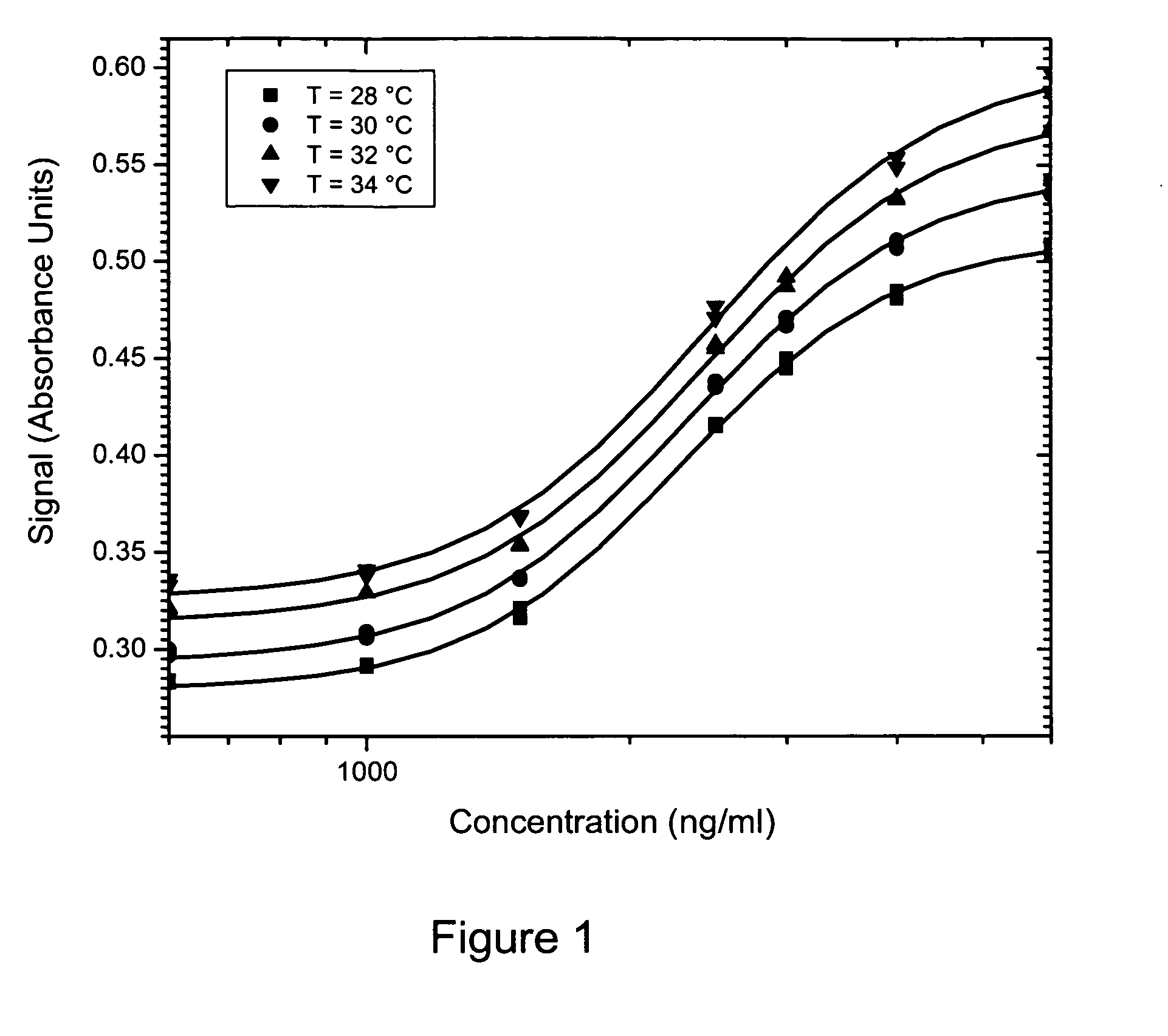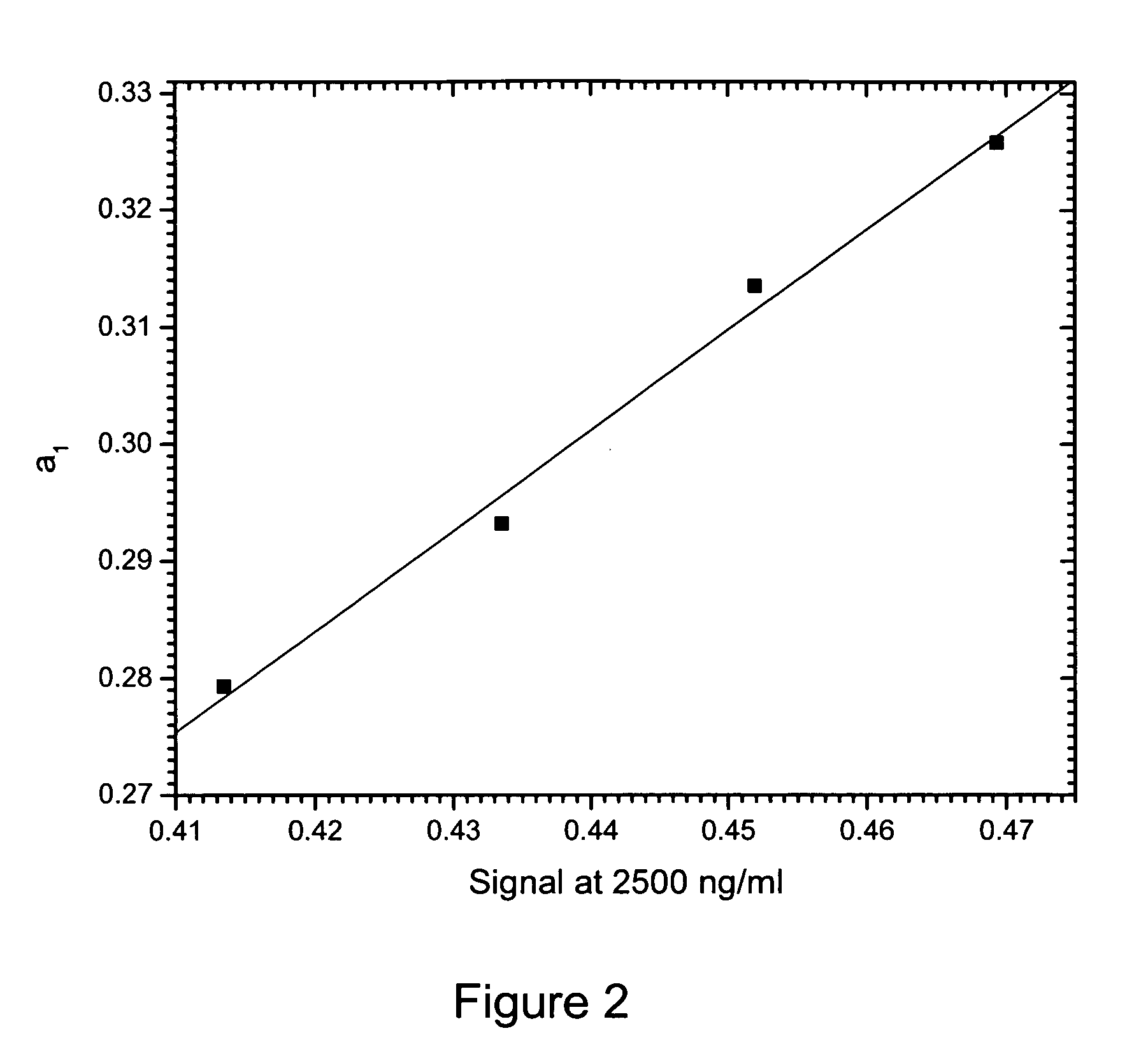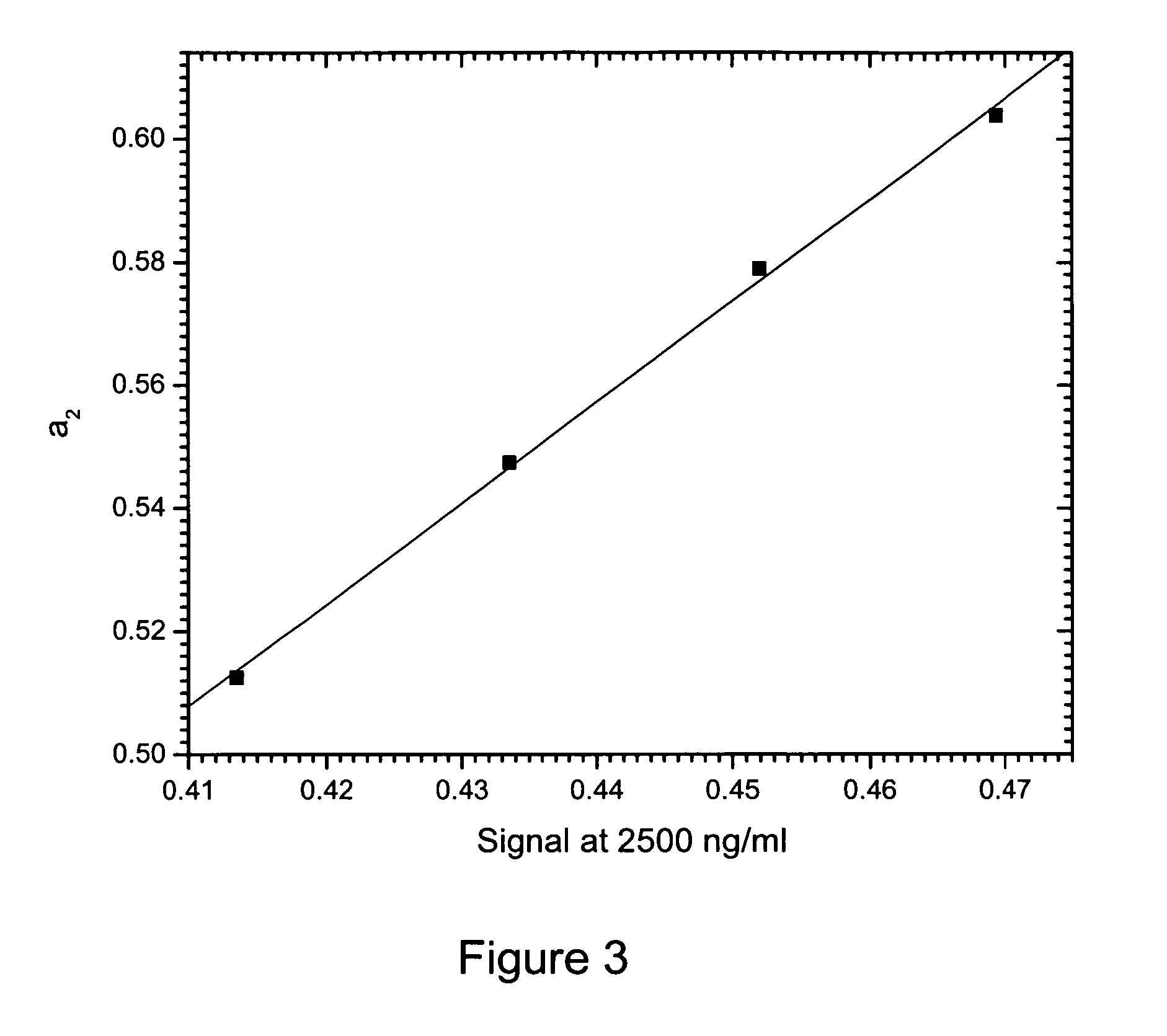Method of compensation of dose-response curve of an assay for sensitivity to perturbing variables
a dose response curve and variable technology, applied in the field of assays, can solve the problems of increased cost, increased complexity, and inapplicability of methods, and achieve the effects of improving accuracy, improving accuracy, and improving accuracy
- Summary
- Abstract
- Description
- Claims
- Application Information
AI Technical Summary
Benefits of technology
Problems solved by technology
Method used
Image
Examples
Embodiment Construction
[0037] As used herein, the phrase “performing an assay” or “assaying” means following a pre-determined set of steps in order to obtain and measure a signal related to an unknown concentration of an analyte present in a sample, and where a known relationship between the signal and the analyte concentration is employed to infer the analyte concentration.
[0038] As used herein, the phrase “dose-response curve” means a mathematical function that describes the relationship between an assay signal and an analyte concentration.
[0039] As used herein, the phrase “an assay parameter” means a coefficient in the dose-response curve of an assay.
[0040] As used herein, the phrase “perturbing variable” means a variable to which an assay signal is sensitive, whereby variations in the perturbing variable produce variations in the assay signal.
[0041] As used herein, the phrase “a signal-generating means that produces a signal related to the value of the perturbing variable” means a material, transd...
PUM
 Login to View More
Login to View More Abstract
Description
Claims
Application Information
 Login to View More
Login to View More - R&D
- Intellectual Property
- Life Sciences
- Materials
- Tech Scout
- Unparalleled Data Quality
- Higher Quality Content
- 60% Fewer Hallucinations
Browse by: Latest US Patents, China's latest patents, Technical Efficacy Thesaurus, Application Domain, Technology Topic, Popular Technical Reports.
© 2025 PatSnap. All rights reserved.Legal|Privacy policy|Modern Slavery Act Transparency Statement|Sitemap|About US| Contact US: help@patsnap.com



